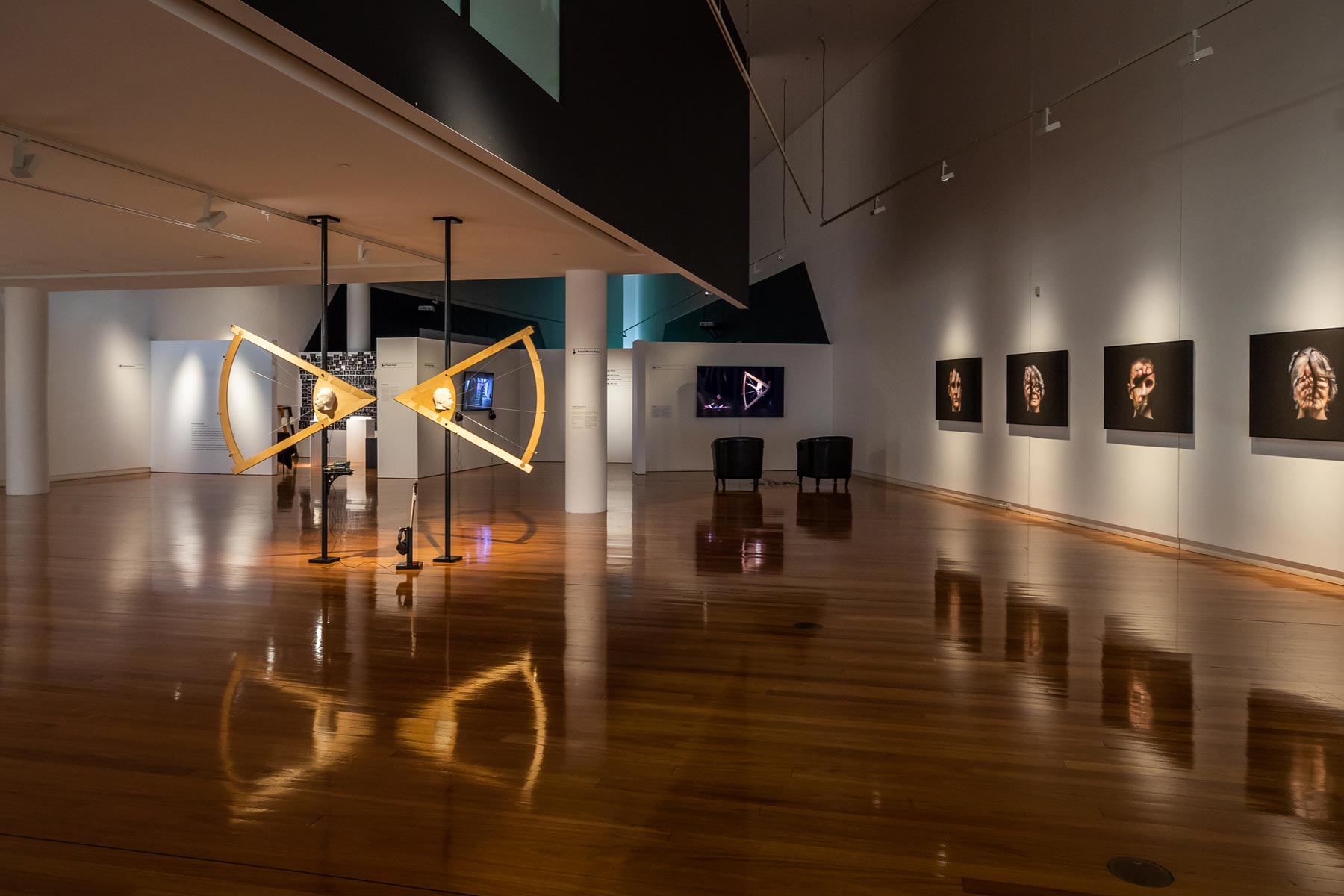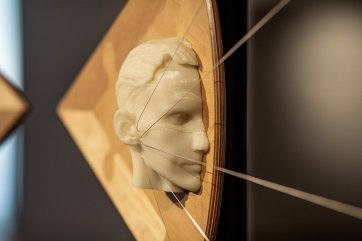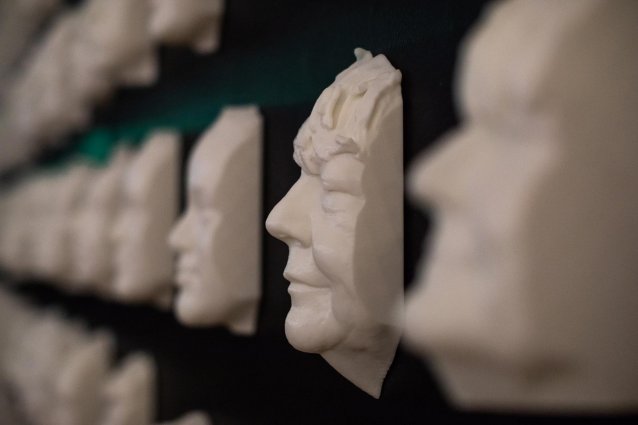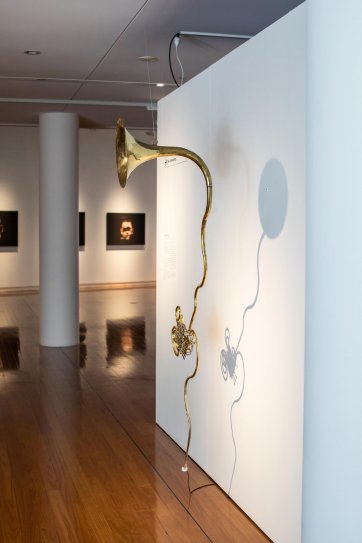I can sing the singing. I can think the thinking. But you’re not going to catch me feeling the feeling. No, sir.
Michael Gambon as Philip E. Marlow in The Singing Detective (1986)
I have always had a fear of hospitals. I remember causing a tremendous tearful fuss when my Year 1 class was scheduled for an educational tour of the local hospital. My parents were mystified. To both the six-year-old me at the time and the 40-year-old me today, the original source of this fear is inexplicable. Yet it lingers. I realised this when I found I was quietly steeling myself to visit the Wagga Wagga Regional Gallery recently to see Face to Face: The New Normal. I knew the exhibition addressed a critical aspect of portraiture, the face, but I also knew that artist Vic McEwan made this work in a clinical setting, addressing the intersection of medical science and contemporary art.
I didn’t need to worry.
As soon as I stepped into the exhibition, it delivered an antidote to my fear. It was quiet with points of reassuring sound, so not spooky-silent or cacophonous. There was space, but it wasn’t uncomfortably empty. It was brightly but warmly lit. The works of art, the curation, labelling and signage, and the design all contributed to an atmosphere of safety, calm and care. I was OK; and ready to understand what this exhibition had to say about the face, and consequently the portrait. I was to realise by the end of my visit that, in one sense, I’d already felt it.
McEwan has undertaken three years of creative practice research in residence at the Sydney Facial Nerve Service at the University of Sydney’s Faculty of Medicine and Health. Embedded within this clinical practice that treats patients experiencing facial nerve paralysis, an inability to move parts of the face, McEwan developed the works in the exhibition. One of McEwan’s supervisors, Dr Claire Hooker, wrote in her essay in the accompanying catalogue: ‘Our face is our fortune. It is the portal between our confined embodiment, with its many social and emotional consequences, and our transcendence of it through the spiritual and relational aspects of existence.’ This observation is also highly relevant to the centrality of the face in western conventions of portraiture.























